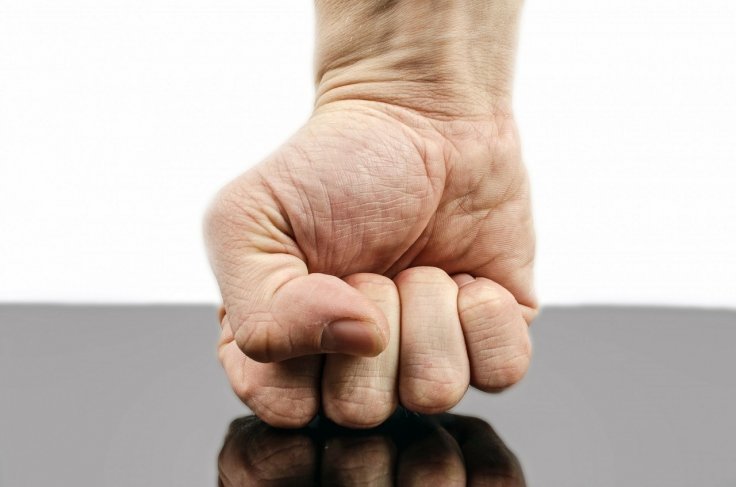The male species of many animals within the animal kingdom have evolved to have weapons incorporated into their anatomy to fight and win in critical situations. Stags have antlers, bison have horns and elephants have tusks to accomplish this purpose. According to a new study, human males also have such a weapon — fists.
Researchers from the University of Utah say the upper bodies of human males are built to throw punches that are more powerful than females'. This suggests the fighting may have been an integral part of our evolutionary trail for a very long time.
"In mammals in general the difference between males and females is often greatest in the structures that are used as weapons," said David Carrier, co-author of the study, in a statement.
The hypothesis
A hypothesis — interpersonal male-male aggression for generations in the past have led to the structures in the human body adapting and evolving to maximize success while fighting — was the subject of Carrier's exploration. Older studies have demonstrated that the proportions of the human hands have evolved not just to carry out regular tasks, but also to provide protection when it forms a fist. Additional studies have explored the strength of the bones in the face and how planted heels can further add to the power of the upper body.

"One of the predictions that comes out of those is if we are specialized for punching, you might expect males to be particularly strong in the muscles that are associated with throwing a punch," said Carrier.
Exploring sexual dimorphism
Collaborating with the co-authors when he was a doctoral student, Jeremy Morris, co-author of the study and an assistant professor at Wofford College, devised an experiment to investigate the sexual dimorphism — differences in two sexes of a species beyond their distinct sexual organs —associated with punching strength in men and women. It is also common knowledge that the upper bodies of males have 90% more strength and 75% more muscle mass than women on average.
"The general approach to understanding why sexual dimorphism evolves is to measure the actual differences in the muscles or the skeletons of males and females of a given species, and then look at the behaviors that might be driving those differences," said Morris.
Testing the hypothesis with a hand crank
Nineteen women and 21 men participated in the study. Their fitness levels were gauged using an activity questionnaire. The idea was to ensure that the participants did not have a sedentary lifestyle and were active and fit.

Punching a bag or any other surface would put the participants of the study at risk of an injury. Therefore, the researchers designed a hand crank that mimicked the motions of a punch in order to test their hypothesis. During the course of the experiment, they also tested another hypothesis that suggested the upper body strength in human males could have evolved for the purpose of throwing a spear or to hunt using one. For this purpose, participants' strength in the motion of throwing a spear was measured.
Built for punching and not for spearing
The researchers found that despite approximately similar levels of fitness, the average power of a male during the motion of punching was 162% greater than females. Surprisingly, this held good even for the least-powerful man, who proved to be stronger than the most powerful woman. Carrier highlighted that such diversification among genders develops with time and for a purpose.

"It evolves slowly and this is a dramatic example of sexual dimorphism that's consistent with males becoming more specialized for fighting, and males fighting in a particular way, which is throwing punches," Carrier pointed out.
However, the study of the spear-throwing motion showed little difference in upper body strength between the two sexes. According to the authors, this further strengthens the conclusion that the upper body strength of males is not special for throwing weapons rather for punching.
Stepping away from our violent inheritance
While the idea that men may be built for fighting is discomfiting, the researchers stress that modern men do not have to necessarily follow in the violent footsteps of their ancestors. The findings of the study may aid in a better understanding of inherent tendencies and evolutionary programming.
Emphasizing that human nature is dictated by the avoidance of violence and seeking methods of co-operation, Carrier concluded, "There are two sides to who we are as a species. If our goal is to minimize all forms of violence in the future, then understanding our tendencies and what our nature really is, is going to help."









